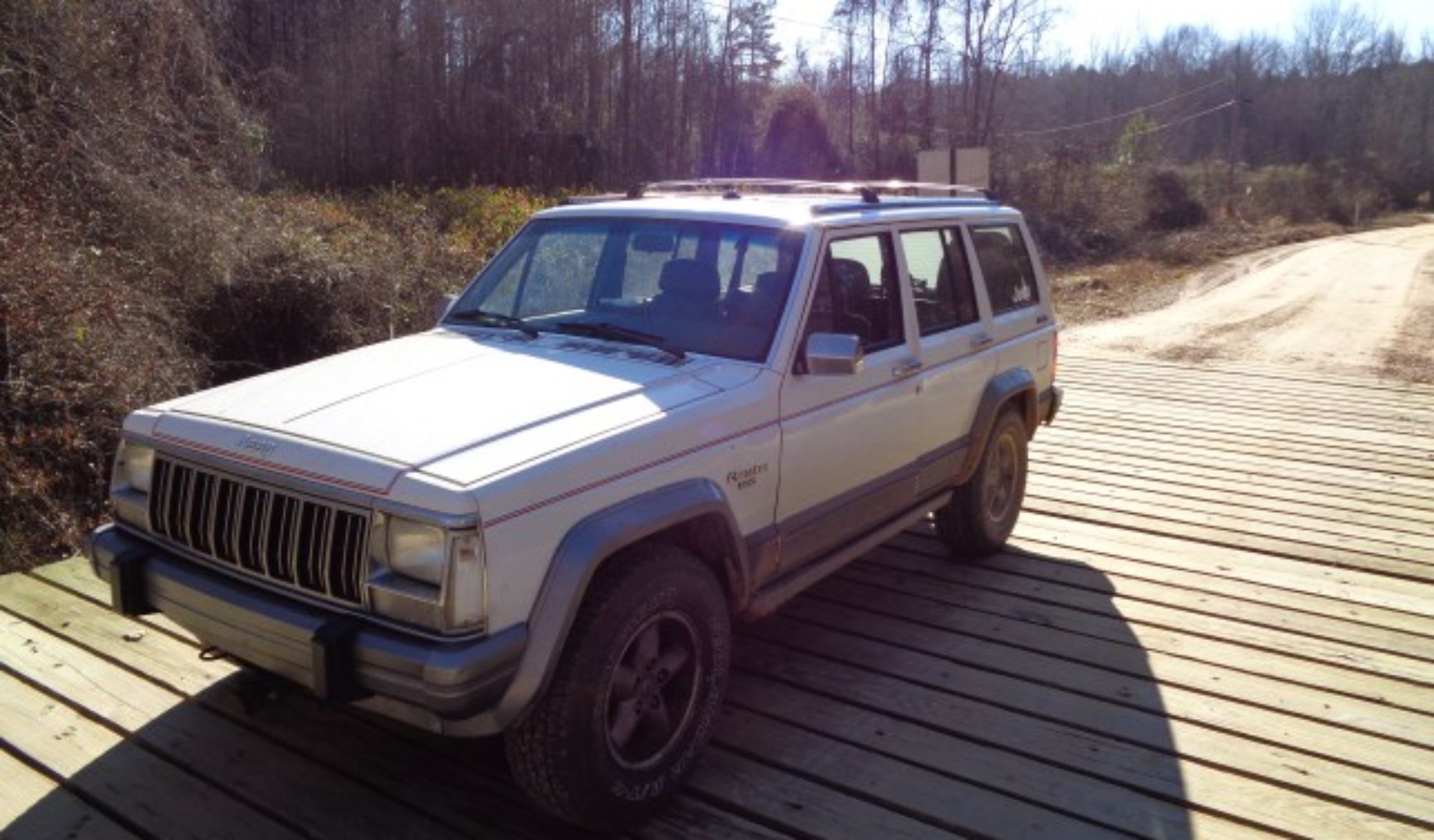Jeep Cherokee Off Road at Golden Mountain

This weekend, Jenny and I met up with some of her Facebook friends at Golden Mountain Off Road Park in Sparta Tn. We took along our two Jeep Cherokees both with three inch lifts and 33 inch tires.
I normally trailer my Jeep, but in an effort to save fuel, I decided to drive the 100 miles to the park. Jenny’s is her daily driver so she drives it every where she goes anyway. The lack of carpet, sound deadening and a muffler made it impossible to hear my cell phone.
I was pretty tired by the time we made it to the park. However, I got my energy back as we pulled off our doors and aired down the tires and disconnected Jenny’s sway bar. Mine is long gone and makes for a wiggly ride on the road.
We son met up with Andy, Jimmy and Ben. They all had much larger tires and lifts than us so they let up lead the way.
We headed up trial one on the left side of the park. Often this trail which is marked as easy is very slick, but it was dry enough for us to handle this day. We made the turn onto trail 10 and enjoyed the step descent and then the climb back up to the top of Bounty Hill. The descent was much easier this trip because the little tree that was in the way of the proper line down the rocks is now gone.
We met the other guys back at the top of the hill and sat for a while and talked while the kids played.
Next we decided to run the inner loop on trail 12. We started off making the climb on trial 11. This is fun rocky climb. It seemed a bit tougher this trip than before however as the heavy rains had washed out some of the smaller rocks. We all made it up with only a few back ups.
We hit 12 and made our way around. The others stopped to play on the rock climbs of trail 38. We were not able to finish the loop however due to a tree across the trail. We turned around and met back up with the others. We then parked for lunch and watched a group of buggies climb the hill. We got to watch a flop right off. They flipped him back on his wheels quickly and he continued the climb.
Next we made our way over to trail 14 and made the loop. We got a bit confused on the multiple trails there and ended up coming back out the way we went in instead of making the circle indicated on the map. This was probably the most technical trail we ran al day. It took about 30 minutes to get both our rigs through about 100 yards of rocks. Jenny’s tie rod got a bit tweaked in the process, and she put some scrapes on her new skid plate. I got to test my new diff cover as well.
After that we ran trail two and Jenny had a run up part of trail 16. We parked for a while at the pavilion and enjoyed the scenic views before heading back down.
We went in by the picnic shelter and down trail 11. It is always fun to go in that was as it does not look like a trail until you actually drop off the ridge behind the shelter. We took trail two back to the parking area and put our doors back on. We said good bye to our new friends and headed south.
We found an air compressor just a few miles down the road and aired up our tires. I was pretty tired by the time I got home. But it was a good tired. Off roading is a great stress reliever.



















